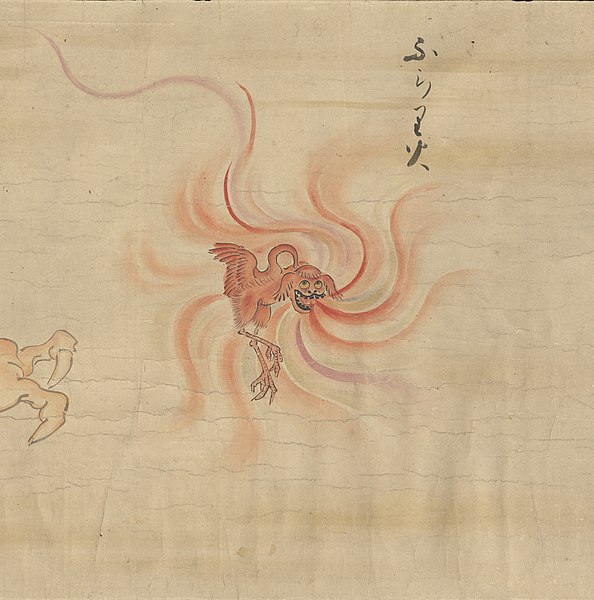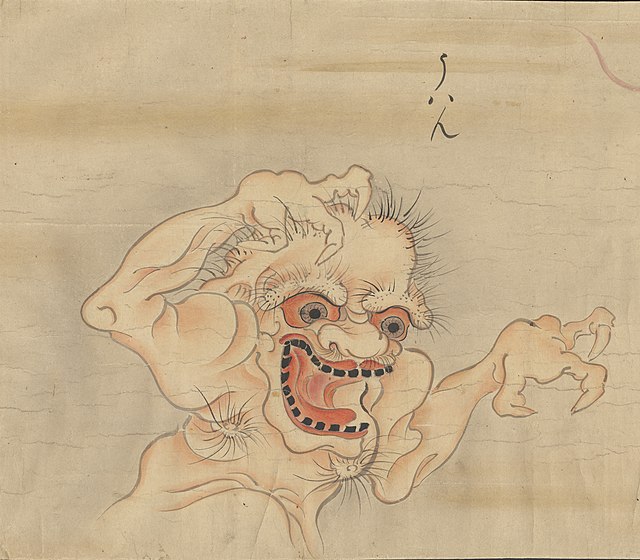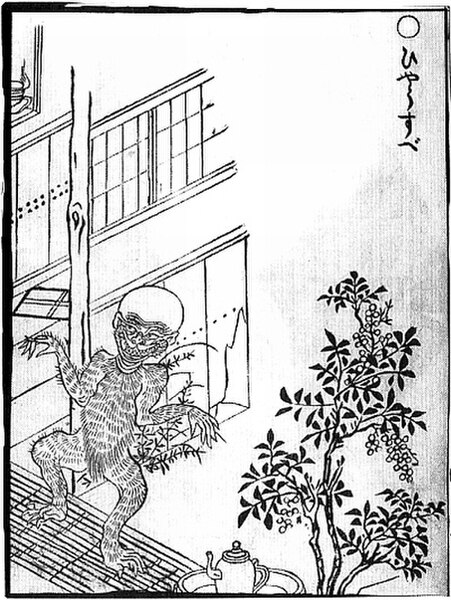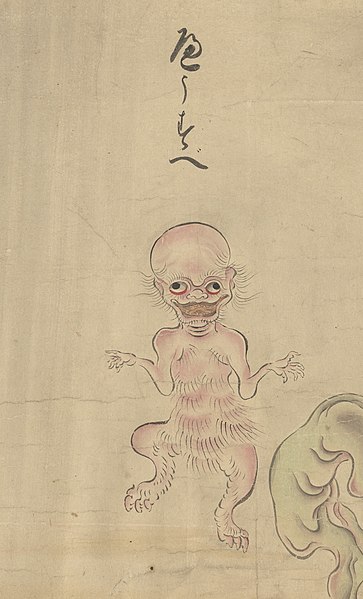Bakemono no e, also known by its alternate title Bakemonozukushie, is a Japanese handscroll of the Edo period depicting 35 bakemono from Japanese folklore. The figures are hand-painted on paper in vivid pigments with accents in gold pigment. Each bakemono is labeled with its name in hand-brushed ink. There is no other writing on the scroll, no colophon, and no artist's signature or seal.
Nurikabe from a scroll dated 1802 by Kanō Tōrin Yoshinobu (狩野洞琳由信) in the collection of Kōichi Yumoto.
1 Daisō (大僧) means "big monk". In most other scrolls and books, this image is labeled Mikoshi-nyūdō (見越し入道), and may or may not be the same yōkai. However, there is one other scroll, "Picture Scroll of One Hundred Demons", in which it is labeled Daisō.
2 Furaribi (ふらり火) means "aimless fire". This aimlessness is due to the troubled nature of the soul that has become a furaribi by undergoing some kind of unnatural suffering, such as mistakes in burial rites or cruel murder, and is now unable to move on to the next life. Furaribi is often depicted as a small flaming bird that can be easily confused for a fire or lantern in the distance.
3 Uwan (うわん) is a creature in Japanese folklore that is a disembodied voice. In most folktales it shouts out "Uwan," consequently frightening those who hear it. Uwan are typically found haunting old homes and abandoned temples. One of the main tales about uwan comes from Aomori Prefecture, and tells of how it yelled in an older couple's house all through the night, keeping them up and frightening them. Uwan had no physical form until the Edo period, when scrolls such as
Hyōsube (ひょうすべ) is a Japanese yōkai. There are legends about them in many areas such as Saga Prefecture and Miyazaki Prefecture.
"Hyōsube" (へうすへ) from the Hyakkai Zukan by Sawaki Suushi
"Hyōsube" (ひやうすべ) from the Gazu Hyakki Yagyō by Sekien Toriyama
Hyōsube (Japanese: へうすべ) from Bakemono no e (Chinese: 化物之繪, c. 1700), Harry F. Bruning Collection of Japanese Books and Manuscripts, L. Tom Perry Special Collections, Harold B. Lee Library, Brigham Young University.







